St Albans images and attractions
This page contains images of some of the features and visitor attractions in St Albans.
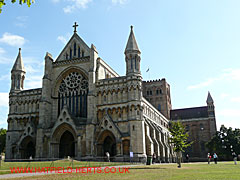
St Albans Cathedral and Abbey Church – unusual in that it is both a cathedral and an abbey church. It houses the remains of St Alban (or at least part of the remains). It was a much larger complex of buildings than what remains today. Much of the land, property (including St Alban's remains) and buildings were lost during the Reformation and dissolution of the monasteries during the reign of King Henry VIII.
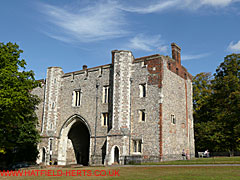
Abbey Gateway – built in the 1360s, and besieged during the Peasants' Revolt in 1381. Reputed to have housed the third printing press in England in 1479. It was a prison from 1553-1869 before becoming part of St Albans School in 1871.
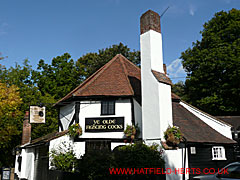
Ye Olde Fighting Cocks pub – one of a number of pubs vying for the title of the oldest pub in England. Oliver Cromwell is reputed to have stayed here overnight during the English Civil War.

The Lake, Verulamium Park
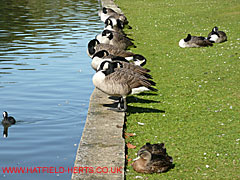
Birds at The Lake, Verulamium Park – it attracts a number of bird species. In this tight view a Bald-Headed Coot is on the left, ducks are in the foreground with Canada Geese behind.
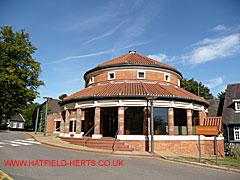
Verulamium Museum – museum dedicated to Roman exhibits and displays related to the ancient Roman city of Verulamium. Entrance charge for people not living in St Albans.
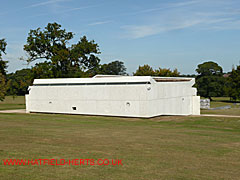
Hypocaust building – located in Verulamium Park, and part of the Verulamium Museum experience, is this structure housing the remains of a Roman mosaic floor and hypocaust (an early form of under-the-floor central heating).

Part of the Roman Wall – part of the Roman wall that surrounded St Albans (or Verulamium as it was called at the time) around 275 AD. This section can be found in Verulamium Park
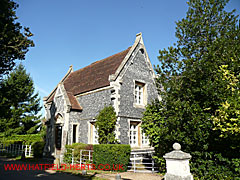
Building at the entrance to the Verulamium Theatre – apart from a solitary upright pillar and foundation walls little remains of Britain's only visible example of a Roman theatre. However, there are also outlines of some other neighbouring buildings so it is still worth a visit. There is an admission charge, and only photography for personal use is allowed without permission.
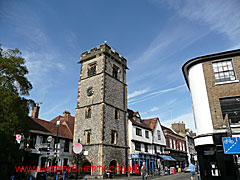
The Clock Tower – built 1403-12, it is one of two (or the only example according some sources) of a medieval inland clock tower in England. During the Napoleonic Wars (1808-14) it was used by the Admiralty as a semaphore station, which could relay messages to or from Yarmouth in 5 minutes. It was restored in 1864 by Sir Gilbert Scott.
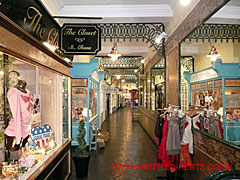
Traditional shopping arcade – a narrow entrance corridor lined with little shops and boutiques.

St Albans War Memorial – the names of the fallen are listed on the base. St Peter's Church can be seen in the background.
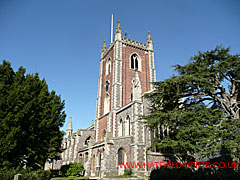
St Peter's Church – opposite end of St Peter's Street from the Town Hall. Among the people buried in the churchyard is Roger Pemberton, who founded the almshouses across the road.
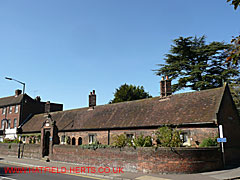
Pemberton Almshouses – founded in 1627 by Roger Pemberton, High Sheriff of Hertfordshire. According to legend as an act of contrition for having killed a poor widow accidentally with a bow and arrow. True or not, there is a metal arrowhead mounted above the entrance arch.
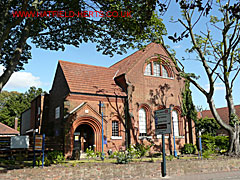
Museum of St Albans – founded in 1898, the museum covers the history of St Albans from the Roman period to the current day. Along with the Salaman collection of trade and craft tools, it also has a Penny Farthing bicycle and a treasure chest / strongbox on display. Entrance is free.
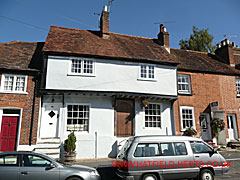
Fishpool Street – there are a number of old-fashioned buildings on this road in the old part of St Albans.

Sopwell Nunnery – the nunnery dates back to 1140 and its founder, the Abbot of St Albans, Geoffrey de Gorham. In 1481, Prioress Juliana Berners published The Book of St Albans – one of the first books to be published in England. However, the ruins visible today belong to a Tudor mansion built by Sir Richard Lee. A soldier and engineer, he was given the land by Henry VIII in 1540.
Back to: Leisure days out – St Albans